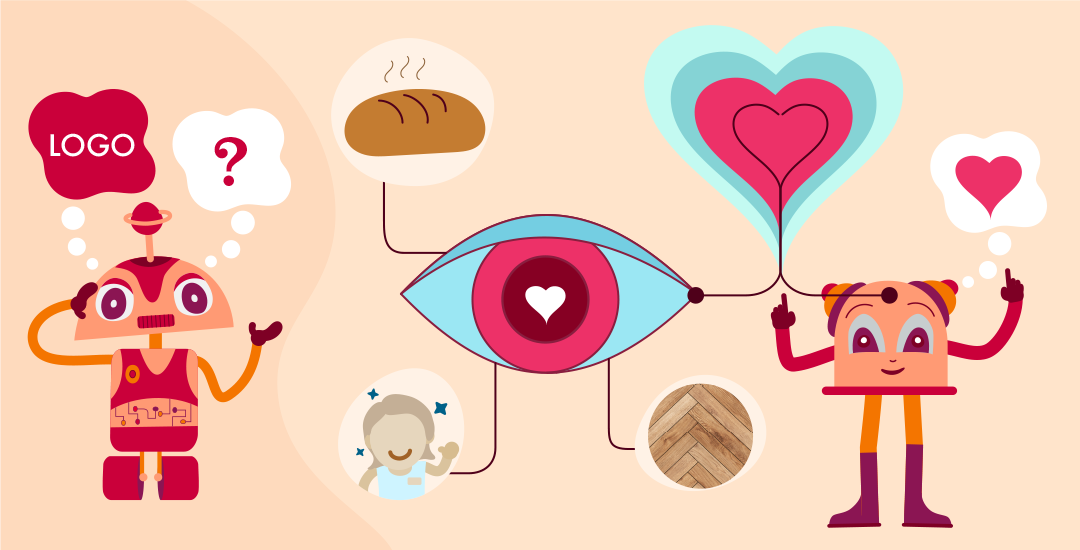Was it the trendy Melrose Ave. location?
The reclaimed wood and minimalist logo?
The group of giddy girls asking for a photo out front?
Or maybe the quiet feeling that we didn’t quite belong among the regulars?
Maybe it was the warm scent of the wood-fired oven.
Or the pastry case.
Or the corner full of rising dough.
Or the sunny little patio that made an April day in LA feel even better.
But honestly? After we left, we didn’t talk about any of that.
We talked about the bread and butter.
Simple. Unexpected. Tantalizing. Perfect.
We went back and forth about which spread was our favorite—the butter, the pesto, the hummus.
And we were way too excited about the lemon meringue pastry we saved for later.
We talked about it for hours.
Not the interior, the playlist, or even the pastry we took home.
We couldn’t stop talking about how it made us feel.
That moment—that small emotional peak—left a deeper impression than anything else.
And it reminded me: this is what great brands do.
The Peak-End Rule (and What Most Brands Miss)
Psychologist Daniel Kahneman calls it the Peak-End Rule:
We don’t remember entire experiences.
We remember how we felt at the peak… and how it ended.

It’s why that warm bite of bread (the peak) mattered more than the logo.
And why a kind goodbye from a cashier (the end) lingers longer than a clever tagline.
And yet—most brands pour their energy into everything but those moments.
We obsess over the homepage hero image.
The polished reel. The one-liner that wins the pitch deck.
But in the real world?
Your brand lives in the cumulative emotional aura it leaves behind.
It’s why so many brands are forgettable and few touch our hearts.
Micro-Moments Matter More Than Ever

Studies say you have around 7 to 10 seconds to convince someone to stay.
A Microsoft report pegged it at 8 seconds, but if we’re honest—it’s probably less.
Five seconds feels closer to reality now.
Most brands treat those few seconds like a Coachella main stage performance:
A big video. A loud headline. A splashy, “look at us” moment.
But we should see it differently.
We should think in micro-moments—tiny emotional cues that speak before logic kicks in.
The welcome tone.
The familiarity in the palette.
The typography that feels intentional.
The warmth of the copy.
The way everything quietly says, “You’re in the right place.”
Design for that first 5 seconds.
And every second after that.
Because the goal isn’t to impress.
It’s to connect—and keep connecting.
From the start to the peak and through the end.
Designing Peak Moments on Purpose

So how does Kahneman’s insight connect to Capsule Design?
It starts with emotional tone—early and intentionally.
We ask: How does this brand actually make life better for someone?
1. Start with the First and Final Touchpoints

If we combine the Peak-End Rule with the 7-Second Rule, two things become clear:
You need to design the start and the end with intent.
Most assume the first touchpoint is a homepage hero.
But it could be:
- An email subject line
- A social media bio
- A podcast ad
- A banner in a hotel lobby
- A conversation with your sales team
And the final touchpoint? That’s anything from:
- A thank-you email
- A tracking update
- A product unboxing
- Set-up instructions
- An FAQ
- Your help desk interaction
You don’t need to redesign everything.
You need to design what your audience remembers.
2. Reduce Noise. Add Signal.

The more you apply Capsule Design across your ecosystem, the more consistency pays off.
But here’s the key: don’t overdo it.
Cut the fluff. Add clarity. Use restraint.
Too many touchpoints? People get fatigued.
But just enough well-placed signals? That creates resonance.
This is how we extend the emotional peak beyond a single moment—and make it last.
3. Ruthlessly Audit the Whole Experience

Once it’s all live, zoom out. Audit everything.
- Where does the brand feel clunky or unclear?
- What’s bloated or out of step?
- If the logo disappeared—would it still feel like you?
I recently bought a high-end audio speaker.
Great website. Stunning packaging.
But the app? Buggy. Bloated. Confusing.
I lost an hour fumbling with it.
The negative peak had arrived.
But then… I hit play.
And the sound?
Perfect.
That final impression changed everything.
Ideally, we don’t just fix a bad experience at the end.
We make both the peak and the end unforgettable.
That’s when design becomes memory.
That’s when branding becomes behavior.
That’s when your customer becomes a believer.
What Capsule Design Is Actually For

I created Capsule Design as a way to design for memory, emotion, and behavior—with just enough system to scale, and just enough soul to connect.
It’s built to help you:
- Create trust without guesswork.
- Signal clarity across every channel.
- Build small emotional moments that stack into lasting impressions.
It’s not a shortcut or a style.
It’s a smarter starting point.
One that moves fast, feels consistent, and earns belief—in 7 seconds or less.
Final Thought
If your customer only remembers one moment, make sure it’s the right one.
Design for the bread and butter.
Design for the last goodbye.
Design for the feeling that lingers.
Because nobody remembers the logo.
They remember this.




No Comments.